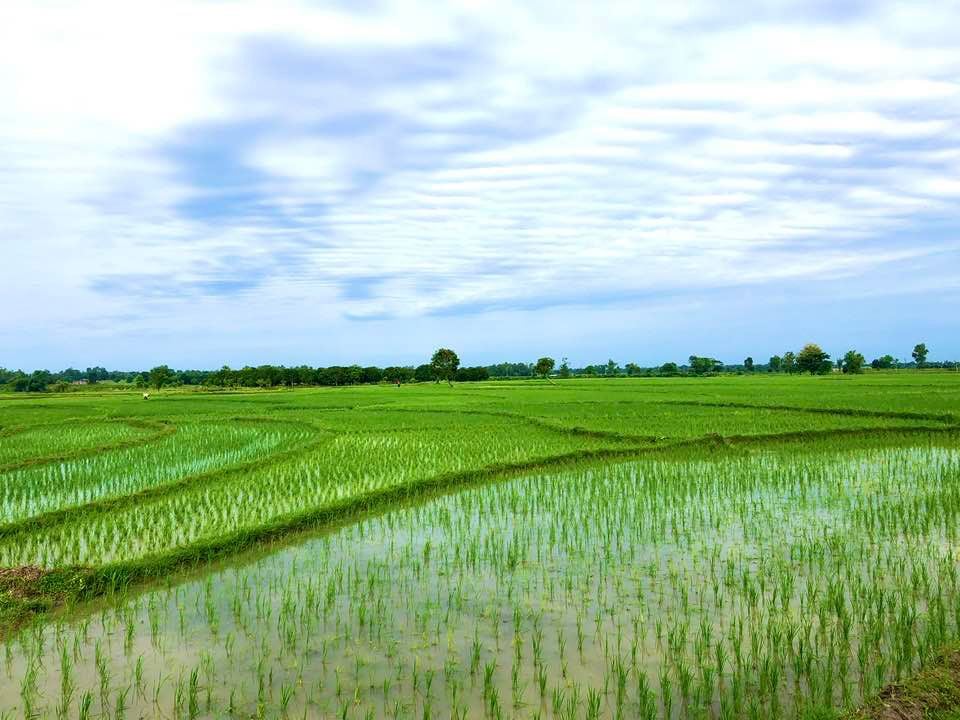
Department of Agricultural Extension (DAE) has set a target of producing more than 26.15 lakh tonnes of transplanted Aman
rice from 7.88 lakh hectares of land in all eight districts under Rajshahi division this season.
Shamsul Wadud, additional director of the DAE, said suitable weather is helping the farmers’ to nurse transplanted Aman seedlings this season and the fixed target is expected to be achieved.
He said the farmers have prepared seedbeds on 52,072 hectares of land in the division to meet the demands of seedlings.
Nurul Islam, 48, a farmer of Puthiya area, has cultivated Aman paddy on five bighas of land saying many of his co-villagers are seen humming towards Aman paddy farming as they got good price of Boro.
Another farmer Ashraful Islam, 37, of Gollapara village under Tanore upazila,
said he has cultivated Aman paddy on six bighas of land after the best uses of rainfall that saved him from extra cost for irrigation.
Meanwhile, farmers have been transplanting seedlings of Aman paddy everywhere in Rajshahi division including its vast Barind tract in full swing for the last couple of weeks with the hope of getting cherished yields.
They are passing their time with seedling transplantation coupled with nursing and caring for the seedbeds and the activities have created job opportunities for many unemployed people.
At present, the farmers are seen transplanting various high yielding varieties, including Bina 17, Bina 7 and Bina 51 and Brridhan 56, Brridhan66, Brridhan71, Brridhan75, Brridhan80, Brridhan87 and Brridhan90, and some other local and conventional ones amidst suitable climate conditions with frequent rainfall.
Dr Fazlul Islam, principal scientific officer of Bangladesh Rice Research Institute (BRRI), said they have released 10 furthermore high yielding paddy varieties for Aman season in the region, including its vast Barind tract, creating high hopes among the farmers in general and others concerned.
The varieties are– Brridhan51, Brridhan71, Brridhan75, Brridhan87, Brridhan90, Brridhan93, Brridhan94, Brridhan95, Brridhan103 and Brrihibriddhan6.
These varieties are comparatively higher-yielding, resource and irrigation saving, drought-tolerant and short-duration compared some other varieties, including Brridhan28 and Brridhan29than and Swarna which are prone to disease and attract insects that affect the farmers in terms of getting yield.
The Brridhan28 and Brridhan29than and Swarna varieties can easily be replaced with the modern varieties, in the Barind area, and this can be an effective means of ensuring food security through boosting paddy production.
The modern varieties have opened up the doors to enormous prospects of food security, and mitigating the crises of irrigation water.
The appropriate timeframe of the paddy seedlings transplantation is up to August 20, while only the late varieties could be transplanted by the end of this month.
“Timely transplantation of Aman paddy seedlings is very important for healthy growth leading to optimum yield in the area,” he said.
He said some of the farmers are expecting transplantation of seedlings after harvesting of Aush paddy. “We have some late varieties for them,” Dr Islam added.
He said farmers have been encouraged to cultivate the latest varieties through various interventions including block demonstration, plots projection and supplying of seed free of cost.
The modern varieties have opened up doors in enormous prospects of food security along with mitigating the crises of irrigation water, he added.
“We have released 10 varieties, including some aromatics, for the Barind area,” BRRI Principal Scientific Officer Dr Harun Ar Rashid said, adding that some of them have gained popularity among farmers during the last couple of years.
He also mentioned that the conventional varieties are being replaced by modern varieties — good signs for the region– in terms of boosting yield.
As rice is a staple food of the country, its production needs to be enhanced, by managing challenges like disease and adverse impacts of climate change.




